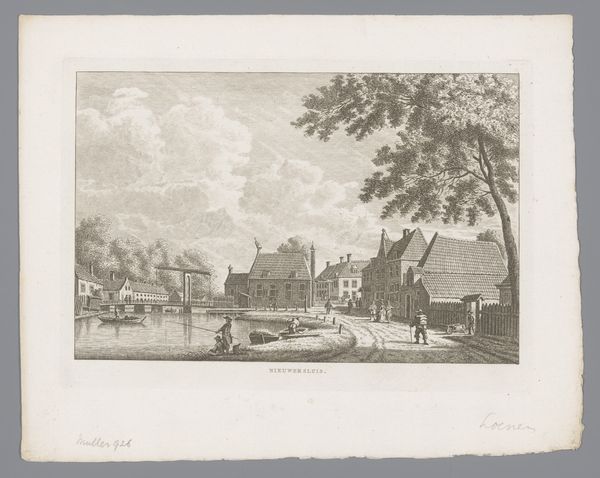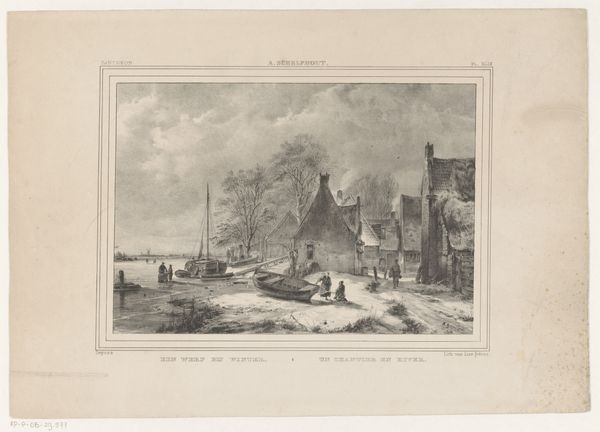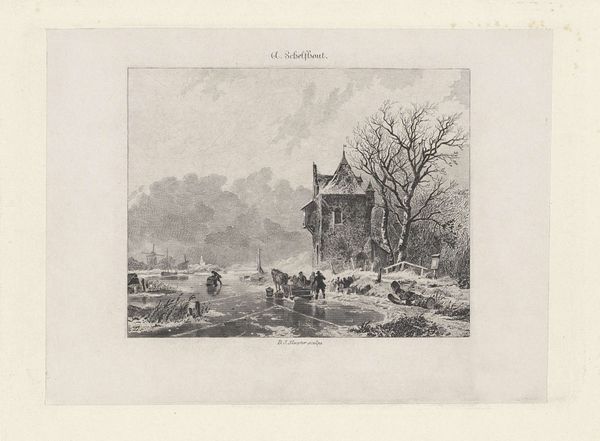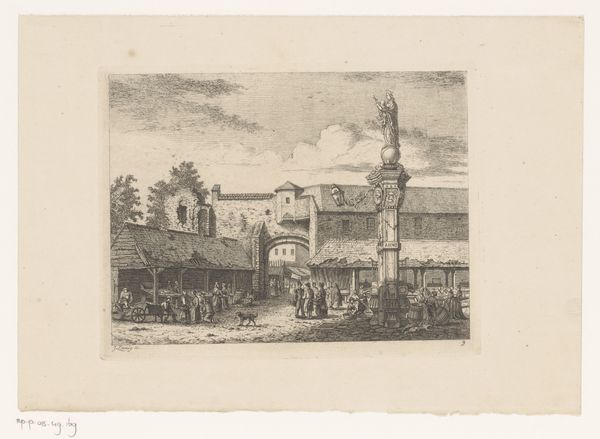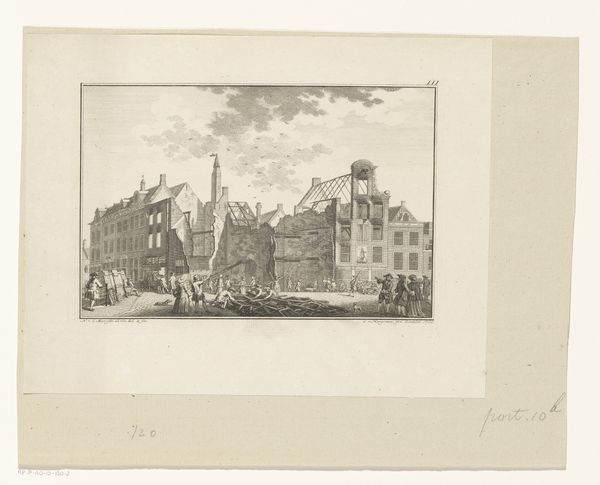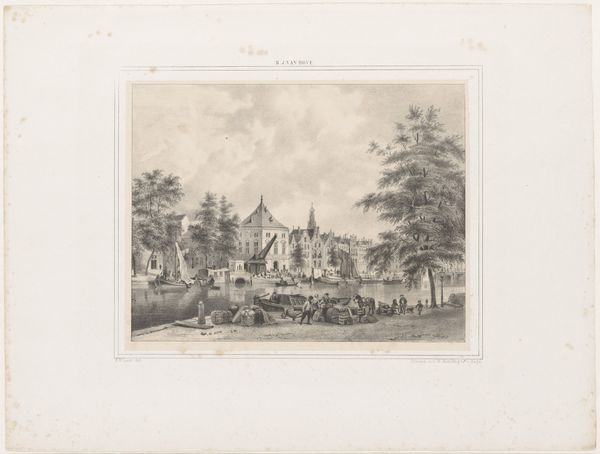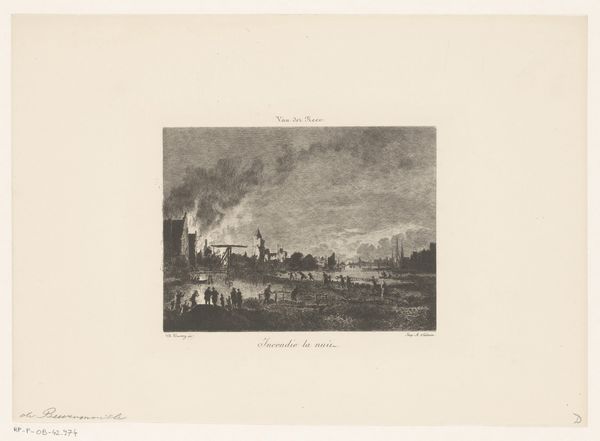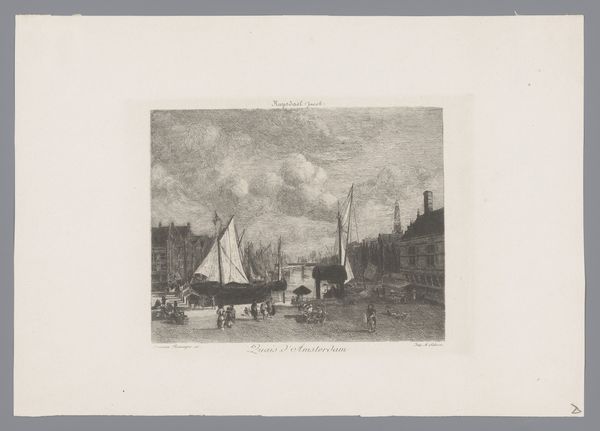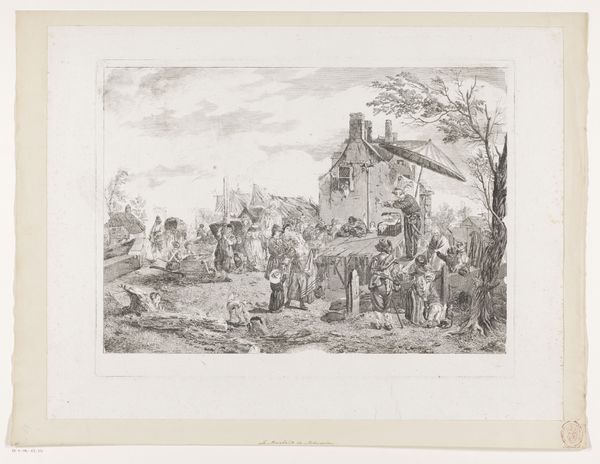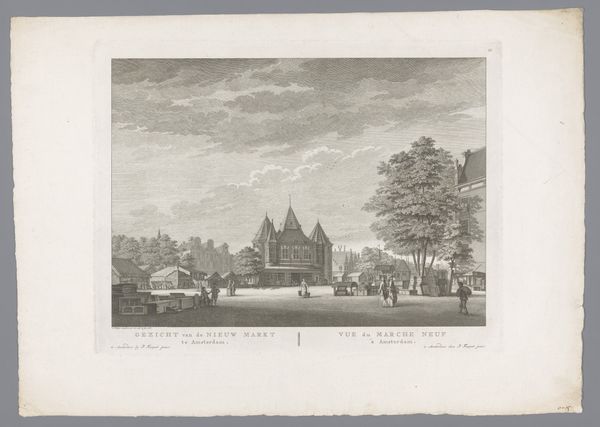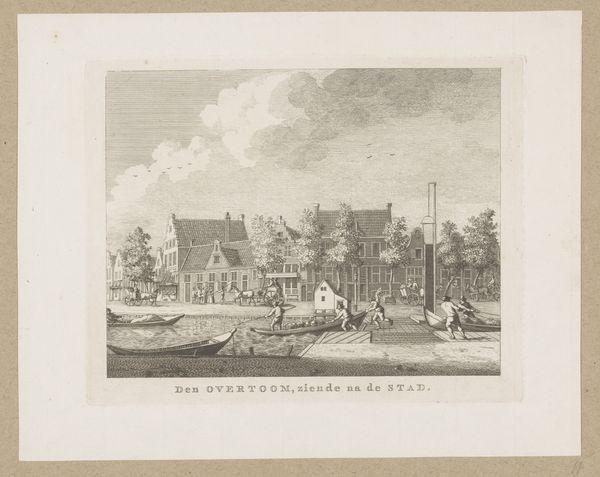
Dimensions: height 261 mm, width 353 mm
Copyright: Rijks Museum: Open Domain
Editor: This is "Winterlandschap met kasteel," a landscape by Adolf Carel Nunnink, likely made between 1847 and 1865. It's an engraving. I find it quite charming, actually, capturing a slice of everyday life. What jumps out at you? Curator: Well, considering the time, look at the material conditions of production. This isn't just a pretty picture. Engravings are labor-intensive, demanding a skilled artisan and access to specific tools and materials. It begs the question, who was this print *for*, and how was it distributed? Was it luxury good or widely accessible? Editor: So, less about the people skating and more about... who printed it and how it circulated? I suppose the "genre scene" aspect, as it's tagged, is almost secondary to the process itself? Curator: Precisely! And consider the choice of *print* as the medium. It democratizes the image, in a way, allowing wider circulation than, say, an original painting only the wealthy could acquire. But also restricts circulation by virtue of technological development at the time, making prints accessible only to the burgeoning merchant middle class. Editor: I never really thought of prints in that way. It is interesting to frame it as something circulating depending on those merchant middle classes. Curator: Now consider how prints are material, as printed on papers that deteriorate, in contradistinction with painting mediums. Its relative longevity indicates that it was regarded, but its circulation might have given its place and meaning to a domestic, everyday use. These tensions, the interplay between the subject matter, the means of production, and its intended audience—that’s where the real story lies. It tells us about consumption, about taste, and how value was assigned to images. Editor: That shifts my whole understanding of prints! Thank you for your time! Curator: My pleasure! Thinking materially changes everything.
Comments
No comments
Be the first to comment and join the conversation on the ultimate creative platform.
